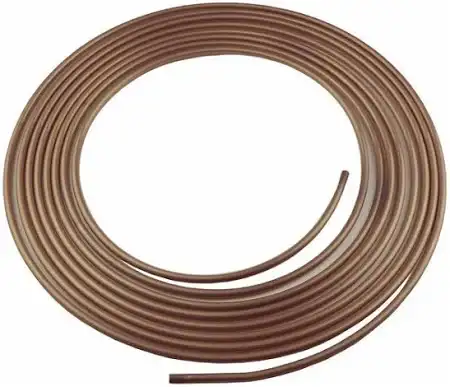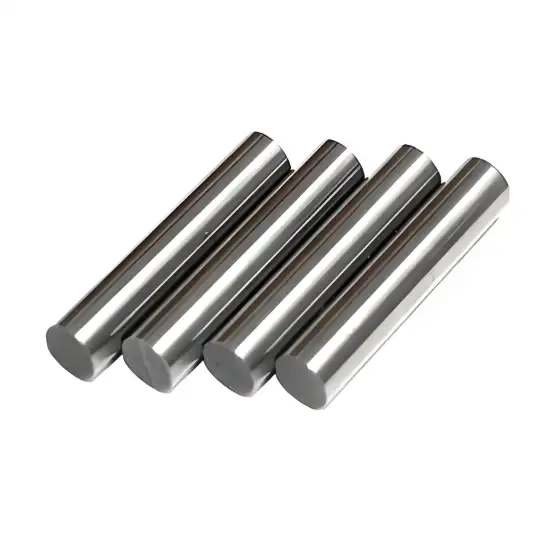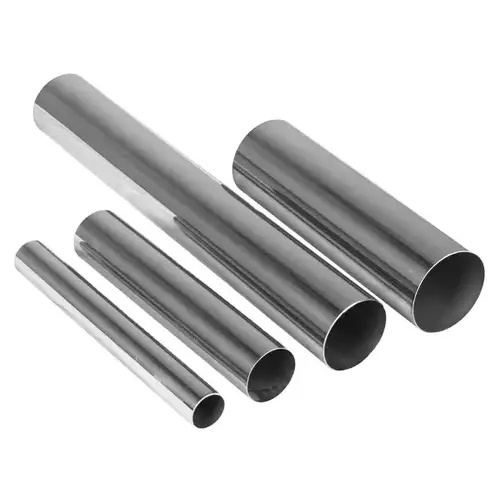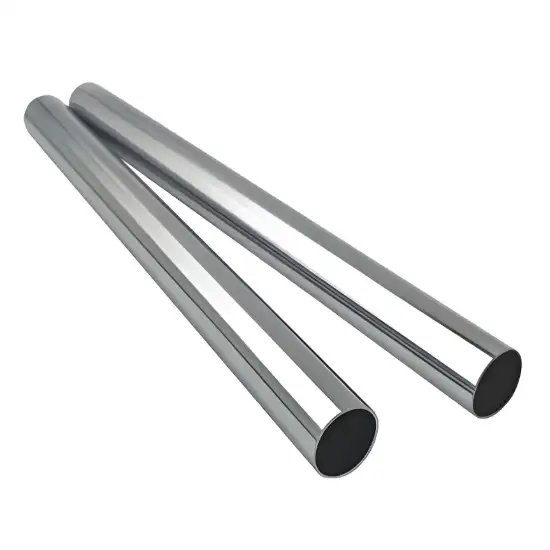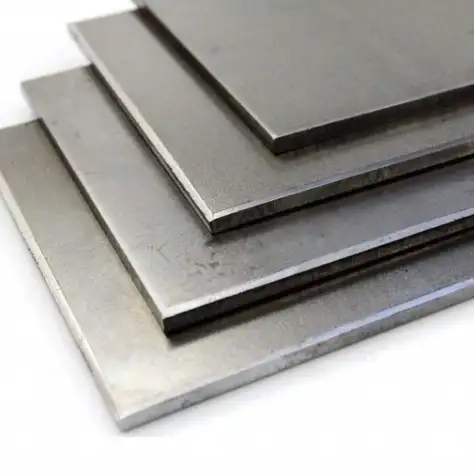Nickel-copper alloy brake lines combine outstanding corrosion resistance, excellent formability, and reliable mechanical strength—making them the preferred choice for modern hydraulic braking systems. At MWalloys, we supply fully customizable CuNi brake tubes directly from our factory in China, ensuring fast delivery, competitive ex-factory pricing, and tailored solutions to meet every OEM and aftermarket need.
Overview of Nickel-Copper Alloys in Brake Lines
Definition and Scope
Nickel-copper (CuNi) alloys—commonly 90/10 and 70/30 grades—feature a blend of copper’s ductility and nickel’s strength. We employ these materials for brake lines because they can be drawn into thin-walled tubing while retaining high fatigue resistance.
Why CuNi for Brakes?
- Superior long-term durability under cyclic pressure.
- Enhanced protection against salt spray, acid rain, and road debris.
- Consistent hydraulic performance from –40 °C to +120 °C.
Chemical Composition and Microstructure
*Typical composition of C70600 copper-nickel alloy for brake lines:*
| Element | Min (%) | Max (%) | Remarks |
|---|---|---|---|
| Copper (Cu) | 86.5 | 89.5 | Balance |
| Nickel (Ni) | 9.0 | 11.0 | Primary alloying element; enhances corrosion resistance & strength |
| Iron (Fe) | 1.0 | 1.8 | Improves resistance to erosion and impingement corrosion |
| Manganese (Mn) | 0.5 | 1.0 | Deoxidizer; enhances workability |
| Lead (Pb) | - | 0.02 | Impurity control |
| Zinc (Zn) | - | 0.5 | Impurity control |
| Others (Total) | - | 0.2 | Includes Si, C, S, P |
Standards Compliance: ASTM B161, ASTM B165, GB/T 5235-2012.
Microstructural Features
Fine grain size achieved via controlled thermomechanical processing leads to uniform mechanical properties and improved bendability.
Mechanical and Thermal Properties
Key mechanical properties of C70600 brake tubing (annealed condition):
| Property | Value | Test Standard | Conditions |
|---|---|---|---|
| Tensile Strength | ≥490 MPa | ASTM E8 | Room temp (25°C) |
| Yield Strength (0.2% Offset) | ≥195 MPa | ASTM E8 | Room temp |
| Elongation (in 50mm) | ≥30% | ASTM E8 | Room temp |
| Hardness (Rockwell B) | 45–65 HRB | ASTM E18 | Annealed state |
| Elastic Modulus | 150–160 GPa | ASTM E111 | Static load |
| Fatigue Strength | 220 MPa | ASTM E466 | 10⁷ cycles, R=−1 |
| Thermal Expansion Coefficient | 16×10⁻⁶/°C | ASTM E228 | 20–300°C |
| Maximum Service Temperature | 650°C | ASTM B165 | Continuous use |
| Electrical Conductivity | 35% IACS | ASTM B193 | At 20°C |
Thermal Conductivity & Expansion
Good heat dissipation minimizes thermal buildup during repeated braking cycles; coefficient of thermal expansion closely matches that of cast iron and steel calipers.
Common Sizes & Weights
Standard dimensions for brake line tubing (OD: Outer Diameter; WT: Wall Thickness):
| OD (mm) | WT (mm) | Length (m) | Weight (kg/m) | Typical Applications |
|---|---|---|---|---|
| 3.16 (3/16") | 0.5 | 15–30 | 0.037 | Passenger car brake lines |
| 4.76 (3/16") | 0.6 | 15–30 | 0.071 | Commercial vehicles |
| 6.35 (1/4") | 0.8 | 3–12 | 0.126 | Heavy-duty trucks, hydraulic systems |
| 8.00 | 1.0 | 3–12 | 0.196 | Industrial machinery |
| 10.00 | 1.2 | 3–12 | 0.300 | Marine/offshore systems |
| 12.70 (1/2") | 1.5 | 3–12 | 0.470 | High-pressure hydraulics |
Corrosion Resistance in Automotive Environments
Salt Spray and Humidity Tests
CuNi alloys outperform standard copper and brass tubing in ASTM B117 salt spray exposures exceeding 1,000 h.
Electrochemical Stability
Low electrochemical potential prevents galvanic corrosion when in contact with steel fittings.
Manufacturing and Quality Control
Tube Drawing and Annealing
We control intermediate anneals to balance hardness and ductility, adhering to ASTM B111/B111M specifications.
Non-Destructive Testing
Eddy-current and pressure testing guarantee zero leaks and consistent wall thickness.
Compliance with Industry Standards
- SAE J1703: Brake tubing performance requirements.
- ISO 4038: CuNi tube dimensions and tolerances.
- ASTM B111/B111M: Copper-nickel alloy tube standard.
- DIN EN 13602: Automotive hydraulic brake tube specification.
Global Price Comparison
| Region | CuNi 90/10 Tube (per meter) | CuNi 70/30 Tube (per meter) | Lead Time |
|---|---|---|---|
| China (MWalloys) | USD 1.80 | USD 2.20 | 5–10 days |
| United States | USD 2.50 | USD 3.00 | 4–6 weeks |
| Europe | USD 2.80 | USD 3.30 | 3–5 weeks |
| India | USD 2.00 | USD 2.45 | 2–4 weeks |
| Japan | USD 2.60 | USD 3.10 | 3–5 weeks |
All prices EXW and subject to change based on order volume and current metal markets.
Tailored Solutions and MWalloys’ Factory Advantage
- 100 % Factory Direct Pricing: Eliminate middle-man markups.
- Rapid Stock Delivery: Standard diameters in inventory ship within 48 h.
- Full Customization: Wall thickness, length, end-forming, and fittings to your specification.
- Quality Assurance: Every batch accompanied by material certificates, test reports, and traceability.
Installation and Maintenance Best Practices
- Proper Bending Radius: Minimum 6× tube OD to avoid work-hardening.
- Fitting Torque: Follow SAE J1926-1 recommended torque values.
- Routine Inspection: Check for surface pitting or deformation every 12 months or 20,000 km.
Environmental and Regulatory Considerations
- RoHS Compliance: Nickel and copper content within regulated limits.
- REACH Registration: Full material dossiers available.
- End-of-Life Recycling: 100 % recyclable without quality loss.
Frequently Asked Questions
Q1: What are the advantages of CuNi 70/30 over CuNi 90/10?
CuNi 70/30 offers higher tensile strength and even better corrosion resistance, making it suitable for extreme environments, whereas 90/10 provides slightly better formability at lower cost.
Q2: Can we request custom fittings pre-installed?
Yes. We support brazed or swaged fittings installed directly on the tubing, saving installation time.
Q3: How do temperature extremes affect CuNi brake lines?
Temperatures between –40 °C and +120 °C have negligible impact on corrosion resistance or fatigue life, ensuring consistent braking performance.
Q4: What testing certificates accompany each shipment?
Every order includes a Mill Test Report (MTR), hardness report, pressure test certificate, and chemical analysis report.
Q5: Is there a MOQ (Minimum Order Quantity)?
Our standard MOQ is 100 m per diameter, but we can accommodate smaller trial orders on request.

